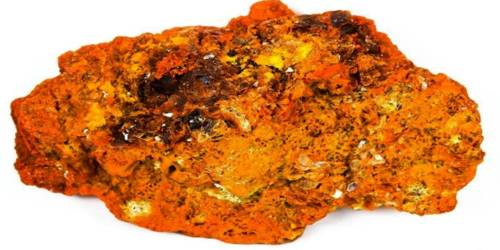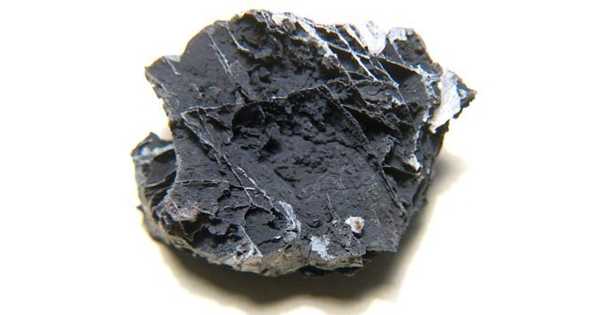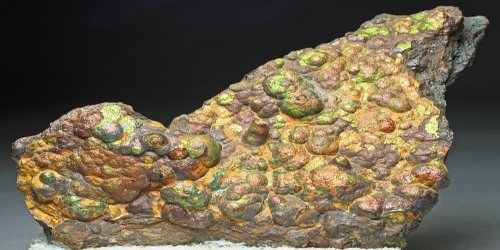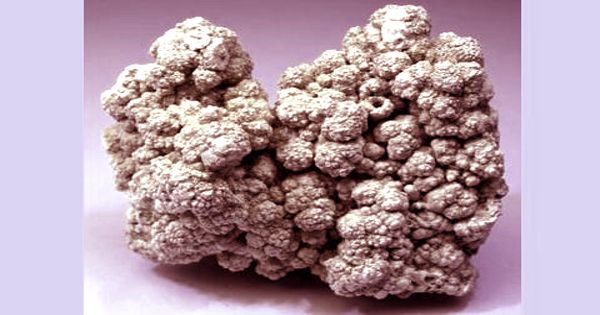Copiapite is a hydrated iron sulfate mineral with formula: Fe2+Fe43+(SO4)6(OH)2.20H2O. It is a secondary mineral that forms from the oxidation of iron sulfide deposits. It is named for the famed mineral locality at Copiapo, Chile which is where it was first discovered.
Copiapite was first described in 1833 for an occurrence near Copiapó, Atacama, Chile. It is sometimes known as yellow copperas. Other occurrences are in California, Nevada, and in the filled paleo sinkholes and caves of Missouri.
General Information
- Category: Sulfate minerals
- Formula: Fe2+Fe43+(SO4)6(OH)2.20H2O
- Crystal system: Triclinic
- Crystal class: Pinacoidal (1) (same H-M symbol)
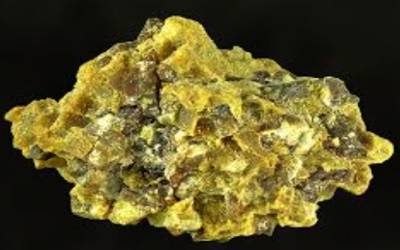
Properties
It is in grayish-yellow or brownish-yellow forms. It has a transparent to translucent appearance, pearly lustre, and a yellow-white streak. The density of is 2.22 g/cm3, and its relative hardness ranges from 2.5 to 3.
- Color: Sulfur-yellow to orange when crystalline, greenish-yellow to olive-green when massive
- Crystal habit: Tabular pseudo-orthorhombic platy crystals, typically in scaly incrustations
- Twinning: Contact twins
- Fracture: Irregular/uneven, micaceous
- Tenacity: Fragile
- Mohs scale hardness: 2.5 – 3
- Luster Pearly on {010}
- Diaphaneity: Transparent to translucent
- Specific gravity: 2.04–2.17
Occurrence
Its most common occurrence is the end member mineral from the rapid oxidation of pyrite. It also occurs rarely with fumaroles. It occurs with melanterite, alunogen, fibroferrite, halotrichite, botryogen, butlerite, and amarantite. It is by far the most common mineral in the copiapite group.
It rarely occurs as single crystals, is in the triclinic crystal system, and is pale to bright yellow. It is soluble in water, changing the water color to deep orange or orangish-red. In solution, copiapite is very acidic. In high concentrations, a negative pH can occur, as reported in waters draining from Richmond Mine at Iron Mountain, California.
Information Source;
